Discover the artwork
of gertrude ryder bennett

DISAPPEARING
BROOKLYN
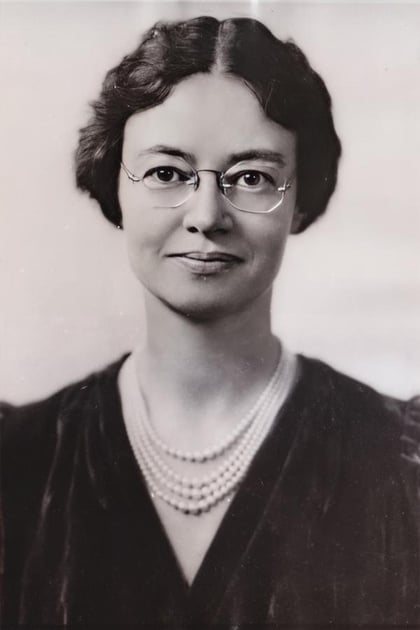
about the artist
Gertrude Ryder Bennett was born at the dawn of the 20th century in a Brooklyn quite different from the one we know today. At the time, Brooklyn was still a place with farmhouses and a close-knit community. As Gertrude grew up, Brooklyn rapidly transformed through urban development. Her mother, Nellie Mae, reminded her to cherish the disappearing sounds and sights of her childhood.
Gertrude was a woman of many talents and accomplishments. In 1926, she graduated from New York University with a teaching degree like her mother and grandmother. She was a writer, a poet, and an artist. Her most significant legacy lies in her written works, poems, and books that offer glimpses into the past. Her books provide poignant recollections of living in a historic landmark and transport readers back to a forgotten era in Brooklyn.
Gertrude's deep-rooted love for history and family inspired her to capture the essence of demolished family homes through her art. These watercolors, painted by Gertrude in the early 1970s, were based on historical photographs, written descriptions, and her childhood memories. Disappearing Brooklyn explores the serene and beautiful Brooklyn during the first half of the 20th century.
Table of contents
01
The Wyckoff - Bennett Homestead
02
The Gerritsen Homestead
03
Gerritsen’s Mill
04
The Elias Hubbard Ryder Homestead
05
The Elias Bennett Homestead
06
The Charles Myers Ryder Homestead
07
The Voris-Shepard Homestead
08
The Albert Voorhees Homestead
09
The Wynant Bennett Homestead
10
The Bennett-Schermerhorn Homestead
01
Artist’s Description: "Wyckoff-Bennett Homestead. By Gertrude Ryder Bennett, July 1971."
The Wyckoff-bennett homestead

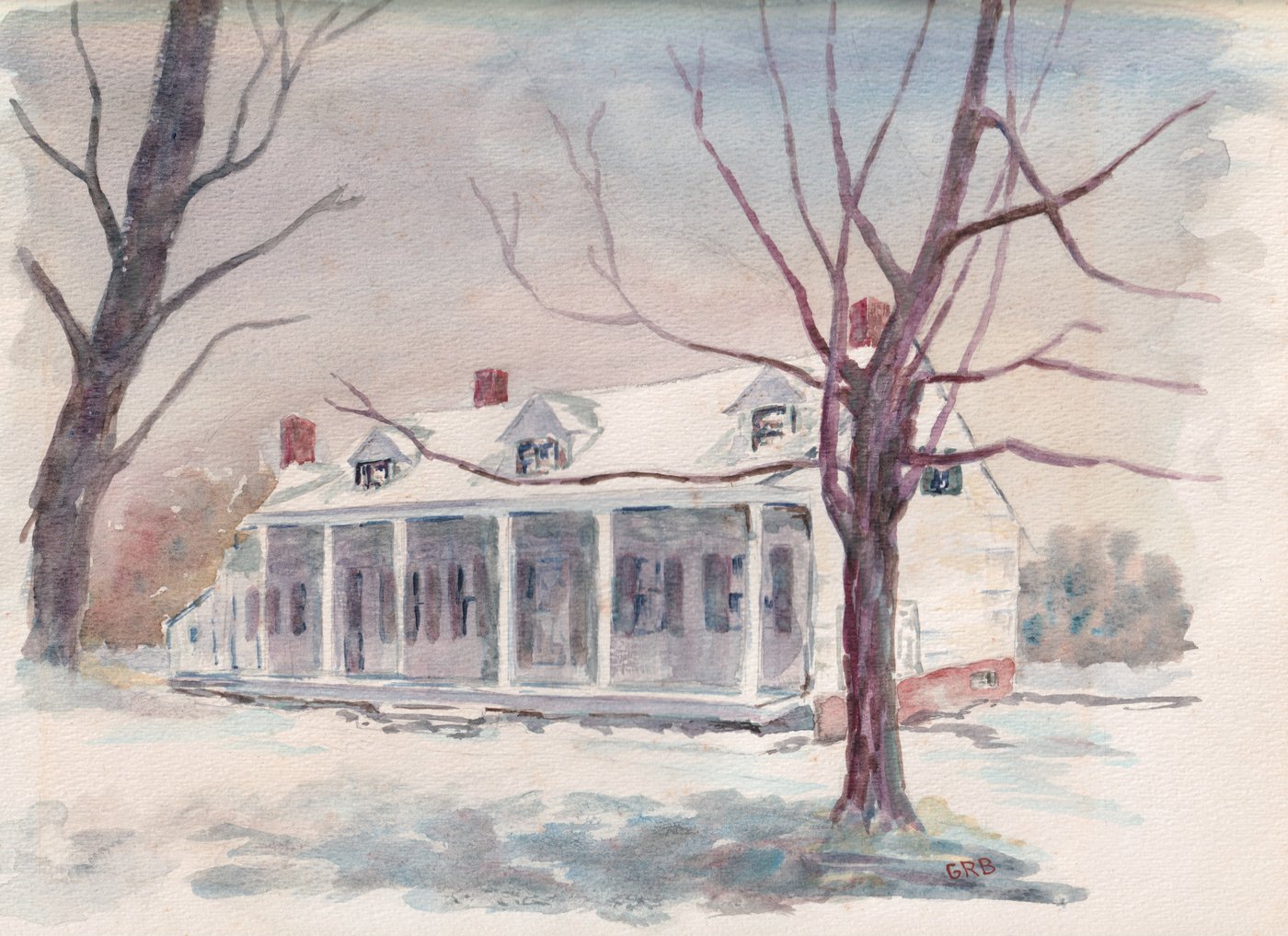
History
The Wyckoff-Bennett Homestead
This one- and one-half story frame dwelling is an example of one of the few remaining eighteenth-century Dutch Colonial farmhouses still standing in Brooklyn.
The farmhouse was built circa 1766, presumably by Henry and Abraham Wyckoff. They were descendants of Pieter Wyckoff, who immigrated to the New World in 1637.
Economic and political conflicts grew between the British colonies and the British government in the mid-to-late- eighteenth century, leading to the outbreak of the American Revolution. As New York entered the Revolutionary War, Brooklyn was in upheaval. On August 22nd, 1776, the British landed on the shores of Gravesend Bay and began their invasion of Brooklyn. Over one week of battle, the American army sustained heavy losses – and the British captured Brooklyn on August 27th, followed by Manhattan on September 15th. The conflict, which would come to be known as the Battle of Brooklyn, was, at the time, the largest battle ever fought in North America and remains the most prominent battle to be fought in the New York region today.
Following the Battle of Brooklyn and the occupation of Kings County by the British, many homes were forcibly occupied by the British and their allies. The Wyckoff Homestead was used to quarter Hessian officers during the remainder of the American Revolution.
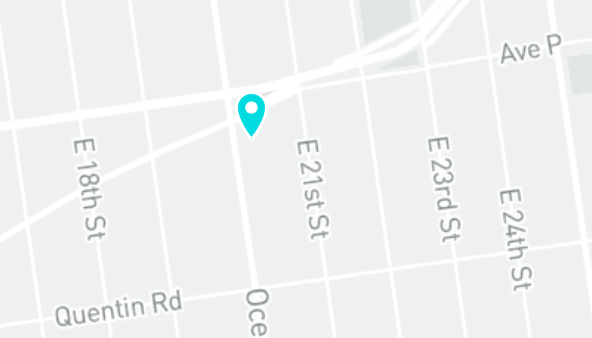
Two glass window panes featured the inscriptions of two Hessian soldiers left by them during their stay. They read, “Toepfer Capt. of Regt. de Ditfurth,” and, “M. Bach Lieutenant Hessen Hanau Artillerie.”
In 1835, the farm, consisting of 100 acres with accompanying meadows and woodlands, was purchased from the Wyckoff family by Cornelius W. Bennett, the great-grandfather of the artist Gertrude Ryder Bennett. The land was farmed by the Bennett family until the turn of the century, and four generations of the Bennett family had lived in the house since its purchase. The property remained in the Bennett family until 1983 when Stuart and Annette Mont purchased it and maintained its preservation.
The Homestead was declared in 1967 by historian Maud Dilliard as the most beautiful example of Dutch Colonial architecture in Brooklyn. It was landmarked by New York City in 1968 and named to the National Register of Historic Places in 1976.
02
Artist’s Description: "Gerritsen's house on the west side of the Strom Kill, Brooklyn. Between Avenue U and Avenue V on the Gerritsen Mill Pond. Painted by Gertrude Ryder Bennett, 1971."
THE GERRITSEN HOMESTEAD


History
The Gerritsen Homestead
The Gerritsen House was built on land acquired initially by Hugh Garretson, the first of the family to settle in South Brooklyn. Garretson had been granted title to the property along the southwest bank of the Strom Kill, the creek that would one day bear his name.
The house was a one-and-a-half-story dwelling with Dutch attributes of timber framing.
The property remained in the Garretson family for centuries. On December 20th, 1765, Hugh's descendant, the miller Johannes Gerritsen, left the Homestead and Mill to his son, Samuel Garritsen. In 1822, the property passed to Samuel's son John, who was a miller like his father and grandfather before him. In 1864, John conveyed the estate to his son, Samuel J. Gerretsen.
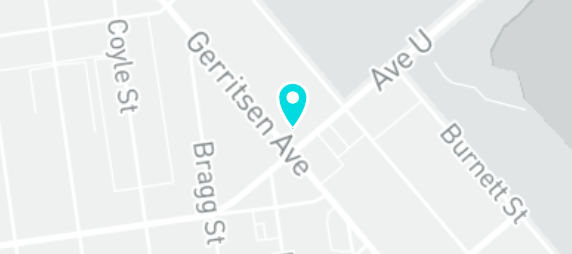
In 1876, Samuel J. bequeathed the Gerritsen property to his two daughters, Mary C. Polhemus and Helen B. Herriman, and their husbands, Abraham and Stephen. Upon Abraham Polhemus' death in 1879, his portion of the estate went to Mary's sister, Helen. In 1899, Helen sold the estate to the Honorable William C. Whitney. Whitney, a prominent businessman and racing enthusiast, purchased the Homestead and Mill as a breeding and training farm for his horses. He rebuilt, refitted, and restored the premises.
In 1925, the City of New York acquired the Whitney estate to accommodate the implementation of urban development.
03
Artist’s Description: "Gerritsen's Mill, on the Strom Kill of Gerritsen's Creek, Brooklyn. By Gertrude Ryder Bennett, June 1971."
GERRITSEN’S MILL

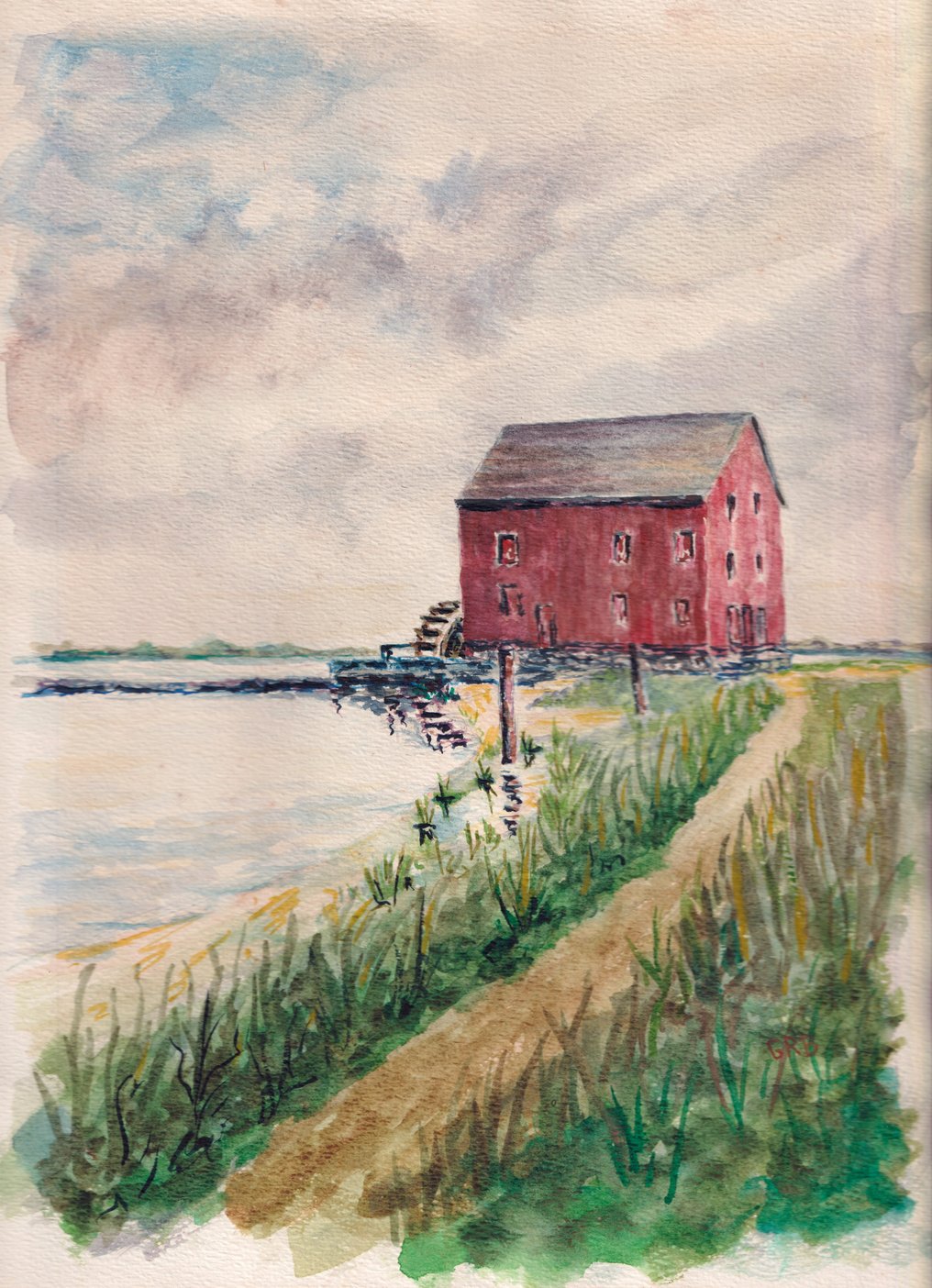
History
Gerritsen’s Mill
Gerritsen's Mill, built by Hugh Garretson, the first of the family to settle in South Brooklyn, was one of several early Dutch mills established along the coast. Garretson had been granted title to the property along the southwest bank of the Strom Kill, the creek that would one day bear his name.
Before the construction of Marine Park, the Strom Kill (later Gerritsen's Creek) extended past Avenue U. It cut across the present-day park, past Fillmore Avenue, and flowed north to Quentin Road. The creek was filled between Quentin Road and Fillmore Avenue in 1922 and between Fillmore Avenue and Avenue U in 1934.
The Mill utilized the tides to generate power, making it a tidal-powered gristmill. When the tide was low and the basin empty, a gate would close for the high tide. The water would rise to the top of the sluiceway and pour over the top, making the wheel turn.
Though the exact date of construction is unknown, historians claimed it was the oldest standing structure in Brooklyn and New York State. It can be confirmed in the historical record that the Mill was operating by the middle of the seventeenth century. Early patents dating to May 13th, 1664, and December 19th, 1645, mention the Mill as a boundary or defining marker, establishing that the Mill had been constructed at this point. Charles A. Ditmas, former president of the Brooklyn Historical Society, said in 1935 that the Mill was grinding flour for the settlers of Gravesend and Flatlands as early as 1645.
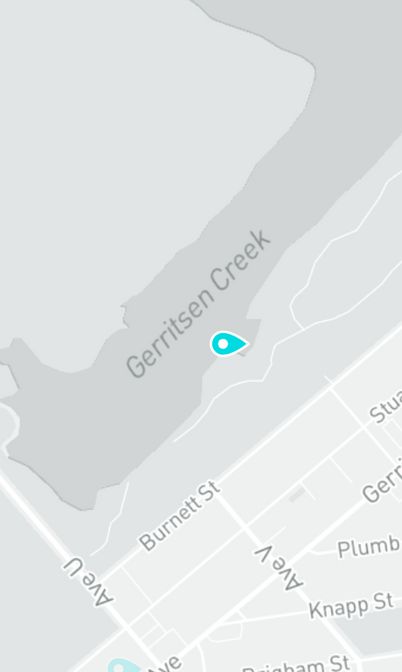
The Mill fed and supplied American troops during the Revolutionary War. It is said that during the Revolution, the owner, Samuel Garritsen, a staunch patriot, removed the mill stones to thwart the Hessian troop's attempting to obtain flour. As a result, the Hessians arrested him until he returned the stones, which his son later did.
The Mill was last operated in 1890, and the property came into possession of the Whitney family in 1899 and was then acquired by the City of New York in 1925. The Mill had fallen into disrepair by the early twentieth century, though efforts to restore the structure had arisen by the early 1930s. By 1934, plans for the restoration by a master millwright were in effect. The restoration was underway when, early on September 4th, 1935, the Mill was destroyed by fire.
Remnants of the damn, likely constructed as a means of controlling the water flow, and the remains of a footbridge can still be seen today at low tide.
04
Artist’s Description: "Elias Hubbard Ryder house, before it was moved to 1926 E. 28th Street, Brooklyn. Painted by Gertrude Ryder Bennett (her grandmother was born here - Gertrude Ryder who married William Bennett).”
THE ELIAS HUBBARD RYDER HOMESTEAD

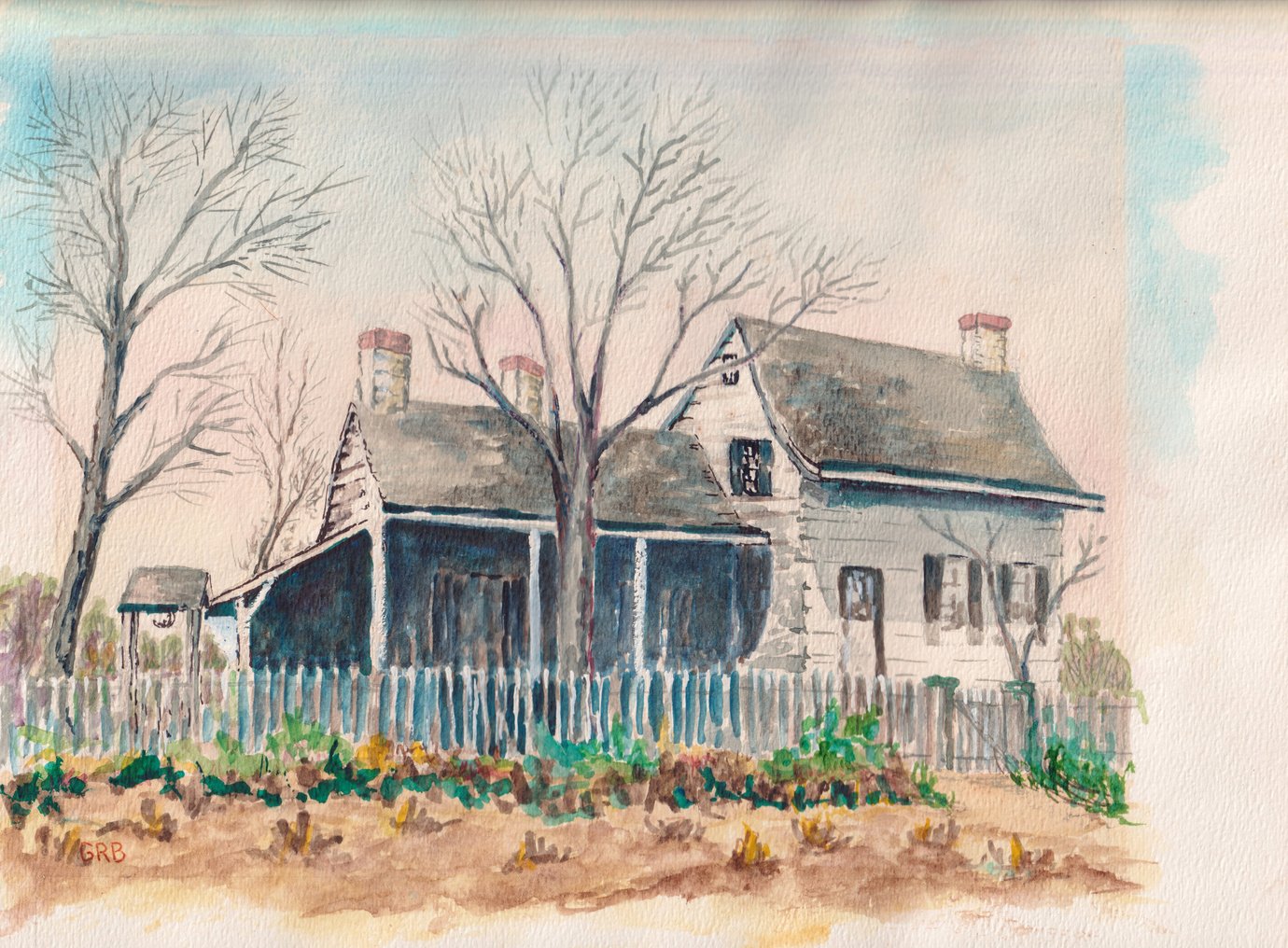
History
The Hubbard-Ryder Homestead
In 1643, Gravesend became the first English settlement within Kings County. It was the first settlement founded by a woman, Lady Deborah Moody, an affluent and progressive Englishwoman who arrived in the New World in the spring of 1640.
On December 6th, 1678, the Gravesend common lands, located in the extreme eastern part of the town, were divided into fifteen-acre lots. In 1712, two of the lots became the property of Bernardus Ryder. Ryder was the son of Barent Juriansz Van Ryden, who had immigrated to the New World in 1658. Van Ryden married Altje (Alice or Adeline) Stevens van voor Hees that same year, and fifteen years later, in 1673, the couple settled in Gravesend.
Bernardus married Ariantje (Adriane or Adriana) Suydam and became an Elder in the Gravesend Church. After his death on November 23rd, 1763, the land went to his son, Jacobus, and his wife, Jannetje (Jane) Ditmars. Jacobus passed away thirty years later, and the land went to his son, Bernardus, named after his grandfather. He was a member of the Gravesend militia who fought in the Battle of Brooklyn during the American Revolution. In 1817, he was appointed one of the five original trustees of the town. Ultimately, the land was left to his two surviving sons, one of whom was Elias Hubbard Ryder.
When Elias received his part of the property in 1827, he lived with his wife, Ann, and his father-in-law, John Stillwell, a descendant of Nicholas Stillwell, one of the town founders, alongside Lady Moody. Elias asked his father-in-law, a carpenter and cabinetmaker, to build a house for him and his wife on the Ryder land.
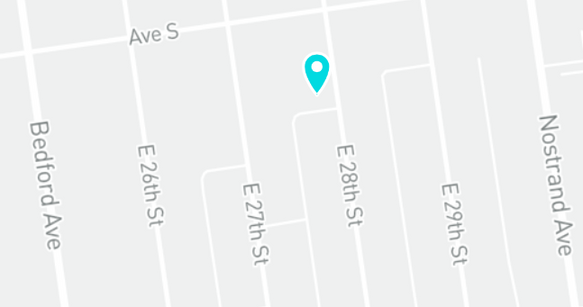
Stillwell did, modeling it after the house in which he had been born and raised. On March 25th, 1834, Elias and Ann moved into their new home. The couple passed away circa 1875, leaving the property to their children, who remained in the Homestead until 1966.
In 1929, as the New York City grid system began to take effect in South Brooklyn, the house was found to be situated in the middle of the road planned for East 29th Street, just off Avenue S. To accommodate their planning, the City acquired the title to the property through condemnation. Later, the City sold the house back to the Ryder family but not the land, allowing the proposed roads to be completed. The house was slightly modified to adapt to the new lot size and moved to 1926 East 28th Street.
On March 23rd, 1976, the New York City Landmarks Preservation Commission designated the early nineteenth-century farmhouse as an individual landmark. It stated that the two-story wood frame structure with Dutch Colonial elements "represents both architecturally and historically a valuable reminder of our heritage."
05
Artist’s Description: "Elias Bennett's farmhouse, facing Ocean Avenue, S.W. corner of Kings Highway, Brooklyn. Pre-Revolutionary. Painted by Gertrude Ryder Bennett from photo and memory, 1971."
THE ELIAS BENNETT HOMESTEAD

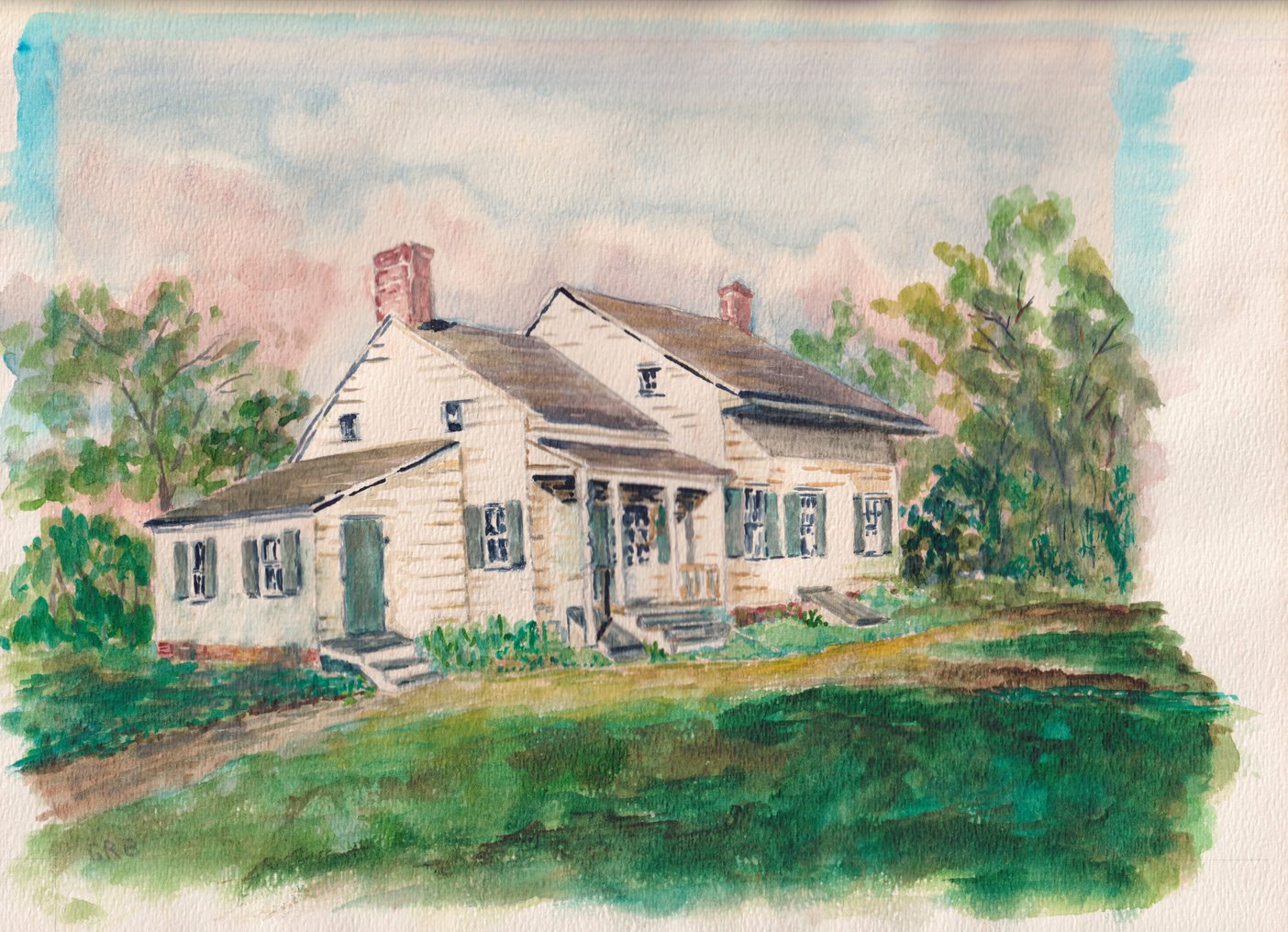
History
The Elias Bennett Homestead
Unfortunately, no additional information could be located for this homestead.

06
Artist’s Description: "Charles Myers Ryder homestead, 32 Ryder Place (Village Road), Gravesend. Painted by Gertrude Ryder Bennett, April 6, 1971, from snapshot."
The CHARLES MYERS RYDER homestead

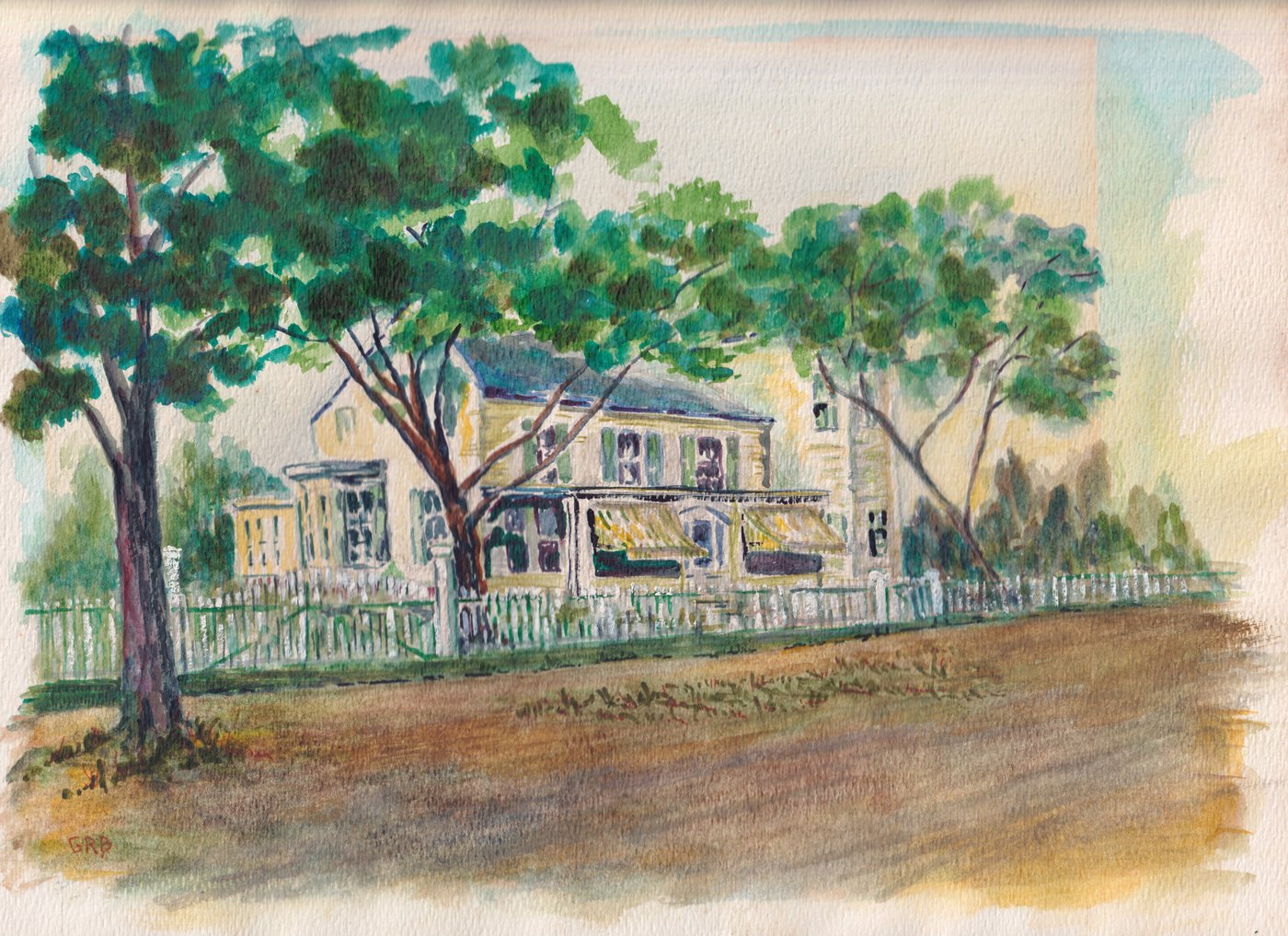
History
The Myers-Ryder Homestead
The Charles Myers Ryder Homestead was initially built to be the second schoolhouse for the Town of Gravesend.
In 1643, Gravesend became the first English settlement within Kings County. It was the first settlement founded by a woman, Lady Deborah Moody, an affluent and progressive Englishwoman who arrived in the New World in the spring of 1640.
Over a century later, in 1788, the Town of Gravesend built a second schoolhouse in the town's center. The following year, in 1789, after the close of the American Revolution, General Washington visited Gravesend and arrived in front of this schoolhouse to greet its students.
The structure functioned as the second schoolhouse for fifty years until 1838, when it was repurposed as the Gravesend Town Hall. It remained as the Town Hall for thirty-five years, until 1873. That same year, the Town Hall was sold at a public auction and purchased by Charles M. Ryder.
Ryder was a prominent butcher within the town and the son of John S. Ryder, who was heavily involved in local politics. He married Gertrude M. Ryder, the grandmother of the artist Gertrude Ryder Bennett.

Ryder moved the structure to his land on Ryder Place and converted the property for residential use. Many happy occasions were celebrated on the property, including the wedding of his only daughter, poet Nellie May Ryder, to Edward Bennett in 1899.
However, the property came to have an eerie and mysterious reputation. The caretaker and Ryder himself reported strange noises in the attic and levitating furniture, among other "supernatural" occurrences. By 1876, locals had begun calling the Homestead "Spook Hall," with local newspapers like the Kings County Rural Gazette embracing the spirit of the house.
Ryder passed away on March 11th, 1917, from Bright's disease at seventy-three years old.
07
Artist’s Description: "Voorhees-Stillwell house, Voorhees family and Stillwell family. Daniel D. Stillwell lived here, W. Shepard bought it in 1888. Painted by Gertrude Ryder Bennett from picture. 'Ballad of Stephen Voorhees' happened in this house. Neck Road near Sheepshead Bay Road."
THE Voris-Shepard HOMESTEAD

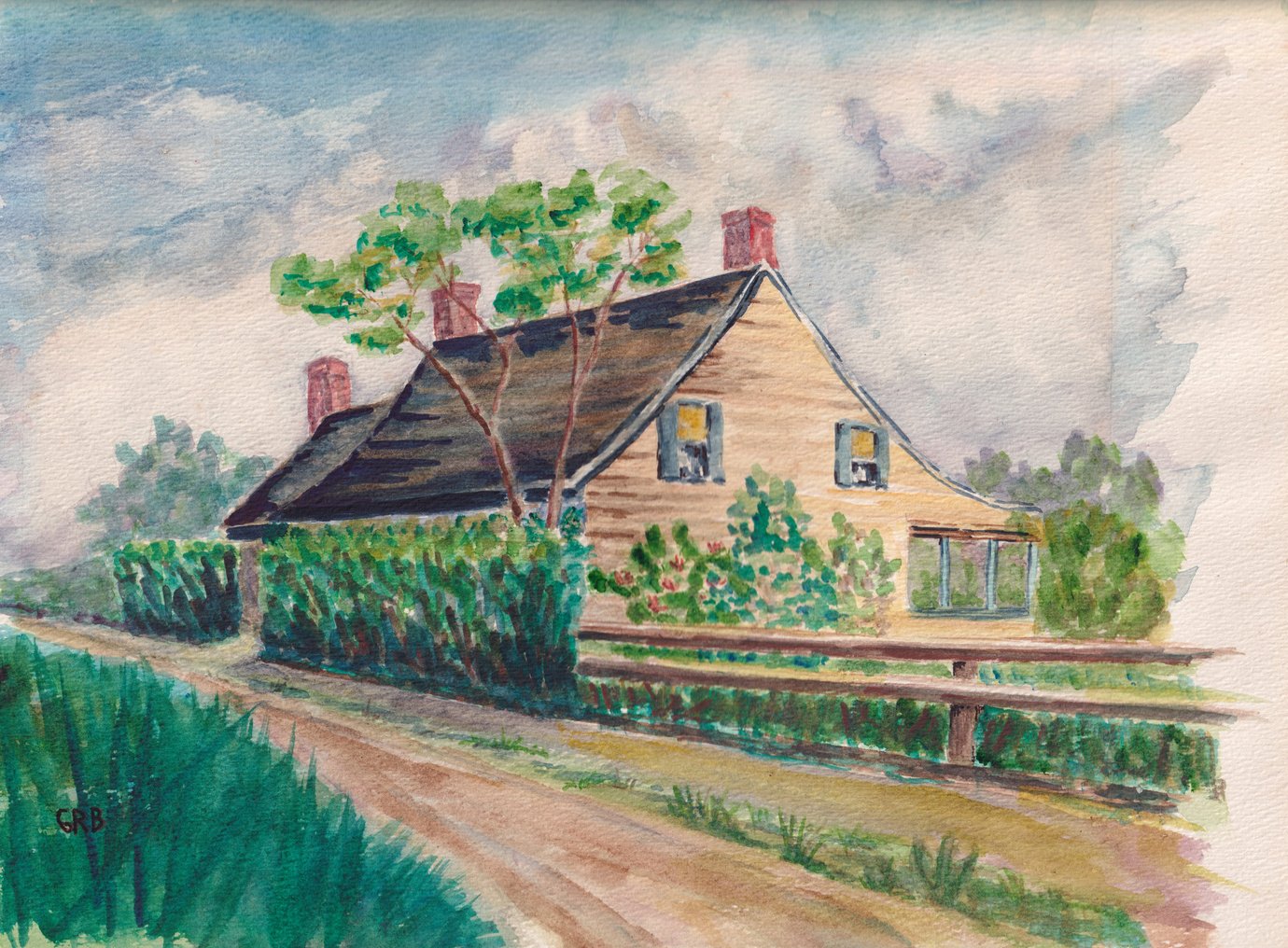
History
The Voris-Shepard Homstead
In 1643, Gravesend became the first English settlement within Kings County. It was the first settlement founded by a woman, Lady Deborah Moody, an affluent and progressive Englishwoman who arrived in the New World in the spring of 1640.
On February 9th, 1688/89, numerous 12-acre-lots in the Town of Gravesend were distributed to its freeholders. Plot 4 was on the south side of Gravesend Neck Road, west of the Strom Kill (Gerritsen's Creek). It was given to Obediah Wilkins, whose heirs conveyed it to Thomas Stillwell.
The property had changed hands numerous times since then. In 1711, Stillwell conveyed the property to Elias Hubbard, who, in turn, sold it to Isaac Denyse in 1754. In 1815, Denyse's son, John, sold the land and Homestead to Richard Stillwell. The property was transferred to Stillwell's son, Daniel, eleven years later. Ultimately, in 1888, Daniel's heirs sold the estate to Dr. William Shepard, a veterinarian.
Before the home reached Dr. Shepard, it was occupied by Stephen S. Voris and his wife, Ann Van Nuyse. The family lived in the house sometime after the birth of their second child in 1837. Voris was a descendant of Coert Stevensen Van Voor Hees, who immigrated to the New World from Holland in 1637 and the son of Steven J. Voorhies and Phebe (Phoebe) Ryder May.
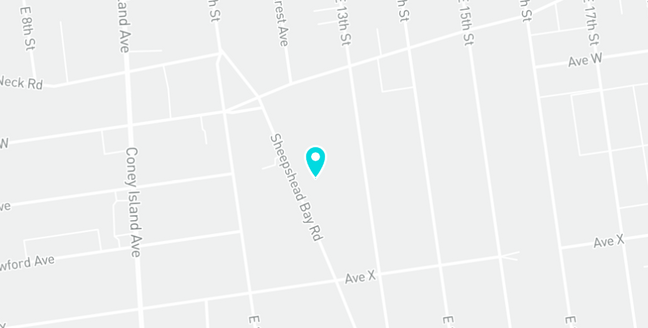
Voorhies was a member of the Kings County militia and worked vigorously to prepare the defenses on western Long Island leading up to the Battle of Brooklyn. The house was the setting for the 'Ballad of Stephen Voorhees.'
The Historic American Buildings Survey presumes that the house was built in 1730. The address was listed as 1240 Gravesend Neck Road, opposite Homecrest Avenue.
In 1936, the Historic American Buildings Survey did a preliminary assessment of the one-and-a-half story farmhouse, noting its wood frame construction, shingle siding, gable roof, and interior end chimneys, illustrative of Dutch style.
It was demolished sometime between 1945 and 1961.
08
Artist’s Description: "Albert Voorhees first house at Gravesend Beach. Built of pirate's money found in an overturned boat - $700, found in a belt under seat in a boat. Albert added to this to build house. Painted March 1971 by Gertrude Ryder Bennett, from tracing of house on a snapshot, the scenery was imagined."
The ALBERT VOORHEES homestead

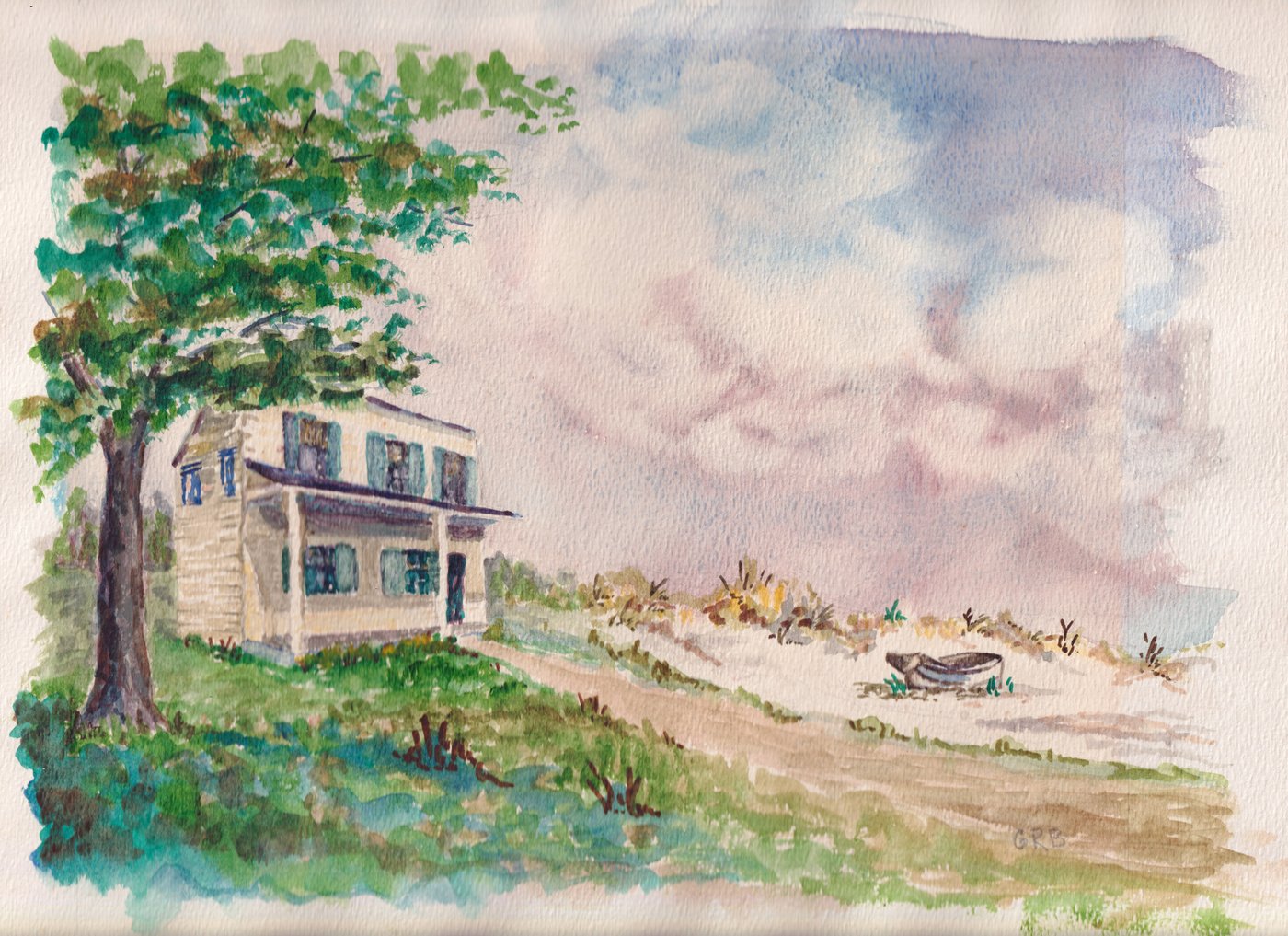
History
The Voorhees Homestead
Unfortunately, no additional information could be located for this homestead.
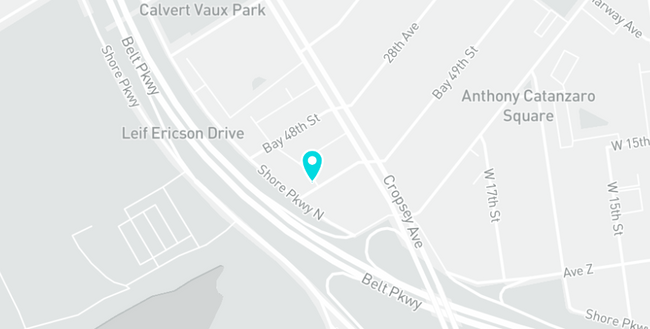
09
Artist’s Description: "Wyvant Bennett house, 23rd Street and 3rd Avenue, Gowanus, Brooklyn. Painted by Gertrude Ryder Bennett, 1971, from picture in The Eagle and Brooklyn, published by The Eagle in 1895."
THE WYVANT BENNETT HOMESTEAD

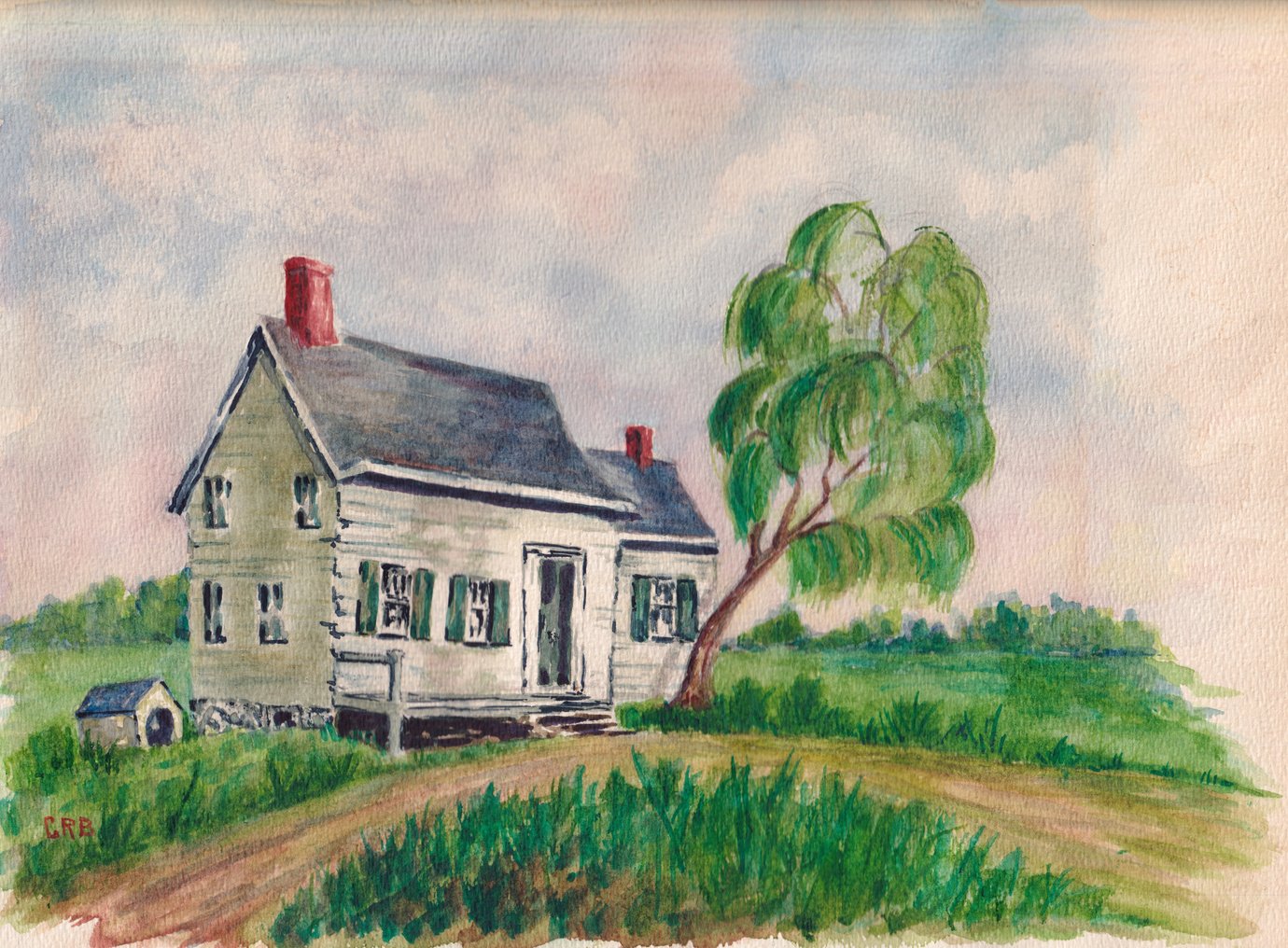
History
The Wynant Bennett Homestead
The Wynant Bennett House, a pre-Revolutionary abode, was located at the present-day corner of 3rd Avenue and 23rd Street in Gowanus.
Wynant Bennett was a shoemaker and a successful farmer active in the Dutch Reformed Church. He became a famed patriot during the American Revolution, having fought valiantly for the cause of the colonies.
During the American Revolution, the Bennett's owned the waterfront along the Gowanus from present-day 25th to 37th Streets, close to where the British reinforcements landed on 32nd and 37th Streets during the Battle of Brooklyn. Wynant was described as a "one-maned army."
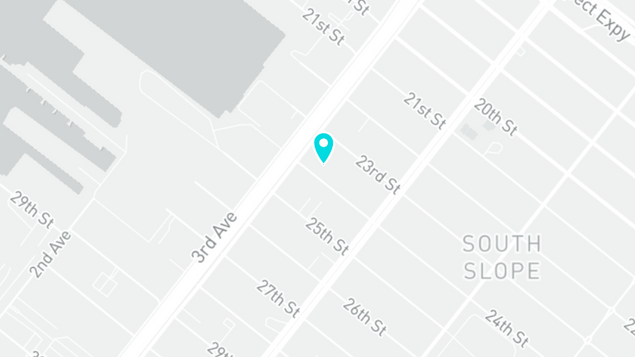
He lived in his ancestral home along the east of the "Blokje's Bergh" road. It was a one-story stone house with a stone wing kitchen in the rear, built at an early period by an ancestor of Wynant's.
Unfortunately, the home was demolished when 3rd Avenue was opened.
10
Artist’s Description: "Bennett-Schermerhorn House, 3rd Ave and 28th Street, Gowanus, Brooklyn. Painted by Gertrude Ryder Bennett from slide Group 43 slide 5A. Thought to have been built by Adrien Bennet.”
THE BENNETT
SCHERMERHORN HOMESTEAD

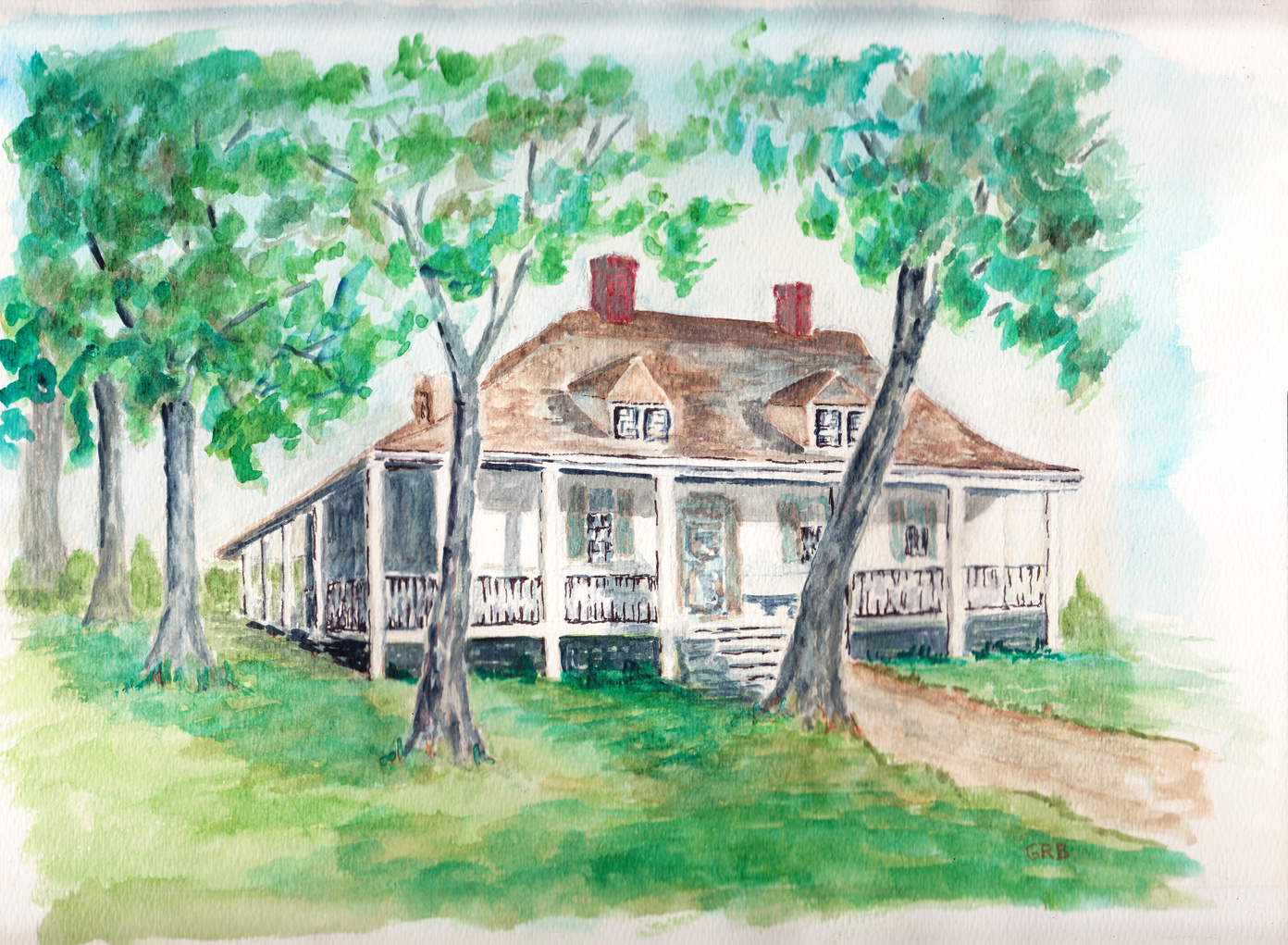
History
The Bennett-Schermerhorn Homestead
The Bennett-Schermerhorn House was formerly located at 3rd Avenue and 28th Street in Gowanus, near Gowanus Bay, in the present-day neighborhood of Sunset Park.
The Schermerhorn family was prominent in New York City. Like his father and grandfather, Peter Schermerhorn (1749-1826) was the owner and commander of shipping vessels that conducted trade between New York City and Charleston, South Carolina.
During the American Revolution, Schermerhorn and his wife, Elizabeth, relocated to Hyde Park, New York, to protect the family shipping vessels from seizure by the British. It was in Hyde Park where their two sons, Abraham and Peter, were born.
Upon his return to New York City following the close of the Revolutionary War, Schermerhorn resumed his business as a ship chandler. He opened a shipping business with his two boys, Schermerhorn and Sons, in Manhattan.
In 1795, Schermerhorn purchased over 150 acres of land near Gowanus Bay for a summer home. The property included a house and farm. The house was built sometime between 1690 and 1697, presumably by Adrien Bennet. It is said that the house stood on the site of the first house ever built in Brooklyn in 1636.
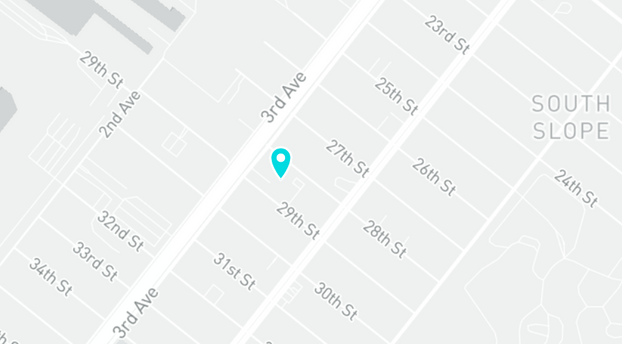
After Peter's passing, his son, Abraham, inherited the Gowanus property.
Abraham Schermerhorn (1783-1850) was a prominent businessman in New York City. He married Helen Van Courtlandt White in 1809 and had nine children. His daughter, Caroline, married William Backhouse Astor, Jr. Abraham expanded upon his father's shipping business during his time in New York City – in 1810, he and his brother formed two new firms, Schermerhorn & Co. and Schermerhorn, Willis & Co. The shipping business was destroyed by a fire in 1841, and the modern Schermerhorn Street is located near the site of their former ropewalk.
In 1835, Abraham sold the Gowanus property, which today makes up a large part of Greenwood Cemetery. The house stood in 1905 and was demolished sometime in the twentieth century.
The Wyckoff-Bennett Homestead
Landmarks Preservation Commission. (1968). Designation Report LP-0173 (See Here)
Lengel, E. (2005). General George Washington. New York: Random House Paperbacks
McCullough, D. (2006) 1776. New York: Simon and Schuster Paperback
Petry, M. (2020). Brooklyn's Historic Wyckoff-Bennett Homestead Is for Sale. StreetEasy (See Here)
United States Department of the Interior, National Park Service. (1974). National Register of Historic Places Inventory – Nomination Form. Washington D.C.: National Archives Catalog (See Here)
The Gerritsen Homestead
Bankoff, A. H., Ricciardi, C., & A. Loorya. (1998). Gerritsen's Creek: 1997 Archaeological Field Excavations.
Hunter, R., and Tvaryanas, D. (2002). Gerritsen's Creek Ecosystem Restoration, Borough of Brooklyn, Kings County, New York. Phase IA Cultural Resource Documentary Study. New York: Hunter Research, Inc.
The Brooklyn Daily Eagle. (1900, October 14th). Fishing for Snappers at Gerritsen's Mill Brooklyn, 19
The Brooklyn Daily Eagle. (1940, June 26th). A Fact A Day About Brooklyn, 10
Gerritsen’s Mill
Bankoff, A. H., Ricciardi, C., & A. Loorya. (1998). Gerritsen's Creek: 1997 Archaeological Field Excavations.
Ditmas, C. A. (1909). Historic Homesteads of Kings County. New York: Published by the Compiler
Hunter, R., and Tvaryanas, D. (2002). Gerritsen's Creek Ecosystem Restoration, Borough of Brooklyn, Kings County, New York. Phase IA Cultural Resource Documentary Study. New York: Hunter Research, Inc.
The Brooklyn Daily Eagle. (1900, October 14th). Fishing for Snappers at Gerritsen's Mill Brooklyn, 19
The Brooklyn Daily Eagle. (1931, July 2nd). Old Landmark Once House Pirate's Bride, 21
The Brooklyn Daily Eagle. (1932, April 20th). Hail Gerritsen Mill's Part in Power Growth, 21
The Brooklyn Daily Eagle. (1934, August 26th). Gerritsen Mill, Old Landmark, To Be Rebuilt, 20
The Brooklyn Daily Eagle. (1935, September 4th). Gerritsen Mill Razed by Fire, 13
The Brooklyn Daily Eagle. (1940, June 26th). A Fact A Day About Brooklyn, 10
The Elias Hubbard Ryder Homestead
Armbruster, E. L. (1923). Photograph, Gravesend: Bernardus Ryder/Elias Hubbard Ryder House. Made available by the Digital Culture of Metropolitan New York (See Here)
De Vries, S. (2023). Unpermitted Work Threatens Stability of Landmarked Elias Hubbard Ryder House. Brownstoner (See Here)
Dilliard, M. E. (1945). Old Dutch Houses of Brooklyn. New York: Richard R. Smith
Landmarks Preservation Commission. (1976). Designation Report LP-0920 (See Here)
The Charles Myers-Ryder Homestead
Mundy, G. T. (2023). 235-Year-Old Historic Brooklyn Monument is Being Demolished Soon After a Neighboring 183-Year-Old Building was Razed. BKReader (See Here)
Roberts, W. I., IV., Clark, R., & P. Crowley. (2000). Old Gravesend Cemetery, Borough of Brooklyn, Kings County, New York. Phase IA Archaeological Documentary Study. New York: Greenhouse Consultants, Inc. Report on file with the City of New York, Landmarks Preservation Commission
Stockwell, Rev. A. P. (1884). A History of the Town of Gravesend. In H.R. Stiles (Ed.), The Illustrated History of Kings County (Vol. 1). New York: W.W. Munsell and Co.
The Brooklyn Daily Eagle. (1917, March 12th). Obituary for Charles M. Ryder.
The Brooklyn Daily Eagle. (1899, February 09th). Weddings, Bennett-Ryder.
The Voris-Shepard Homestead
Dilliard, M. E. (1945). Old Dutch Houses of Brooklyn. New York: Richard R. Smith
Pope, B. (1936). Preliminary Survey of the Voorhees House. Washington D.C.: Historic American Buildings Survey (See Here)
The Wynant Bennett Homestead
Stiles, H. R. (1869). A History of the City of Brooklyn (Vol. 2). Brooklyn: Published by Subscription
Ross, P. (1902). A History of Long Island, From Its Earliest Settlement to the Present Time (Vol. 2). New York: The Lewis Publishing Company
The Bennett-Schermerhorn Homestead
Leonard, B., and Weiss, J. (2006). Schermerhorn Street, in Brooklyn by Name: How the Neighborhoods, Streets, Parks, Bridges, and More Got Their Names. New York: New York University Press
Lockwood, C. (2003). Bricks and Brownstone: The New York Row House, 1783-1929. Rizzoli
Homberger, E. (2004). Mrs. Astor's New York: Money and Social Power in a Gilded Age. Yale University Press
Schermerhorn, Jr., R. (1914). Schermerhorn Genealogy and Family Chronicles. New York: Tobias A. Wright.
About the lott house
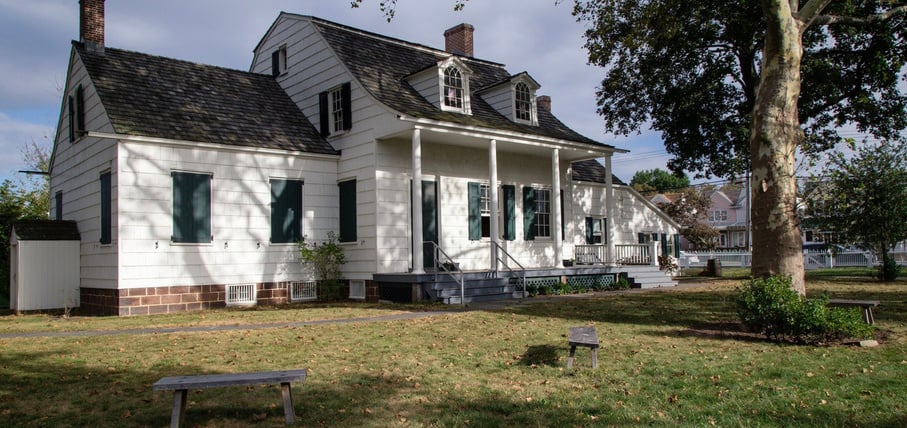
The Friends of the Lott House is a not-for-profit 501(c)(3) organization that was incorporated as the Hendrick I. Lott House Preservation Association in 1994. The group was founded by a group of architects and community members who were passionate about preserving the historic Lott House, which was unoccupied and in a state of disrepair.
Today, the Friends of the Lott House continues to be composed of community volunteers who are working in collaboration with NYC Parks and Historic House Trust towards restoring the interior of the house and opening it to the public. The organization is committed to ensuring that this important piece of New York City's history is preserved for future generations.

Contact us
E-mail
Website
Address
flh@lotthouse.org
www.lotthouse.org
1940 E 36th St., Brooklyn, NY 11234
